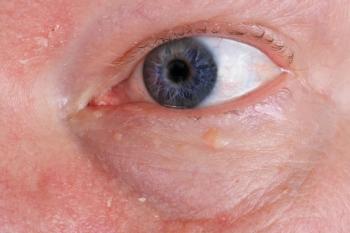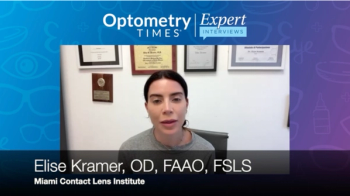
How to manage vision changes over time post-LASIK
How often have you heard a post-LASIK patient say his surgery “isn’t working anymore” or it has “expired?” While the corneal tissue that was ablated is gone forever, eyes can change over time, and laser vision correction does not stop time.
How often have you heard a post-LASIK patient say his surgery “isn’t working anymore” or it has “expired?” While the corneal tissue that was ablated is gone forever, eyes can change over time, and laser vision correction does not stop time. There are many reasons why eyes change after laser vision correction.
The vast majority of patients treated with the excimer laser have stable distance vision.1 A study published in Journal of Refractive Surgery analyzing 4,937 eyes indicates 90.6 percent of patients still see 20/20 binocularly five years after surgery.2
In the early days of laser vision correction, up to 10 percent of patients needed additional surgery after the initial healing period.3 A variety of factors have improved the procedure, and the percentage of patients who need an enhancement procedure within the first year after surgery can be as low as 1.4 percent.4
The patients we will discuss are those who had surgery over one year ago. A percentage of these patients can complain about near vision, distance vision, and fluctuating vision.
Post-surgery options
The most common visual condition ODs see after laser vision correction is presbyopia. While this is not breaking news to any OD, it is to the patient-especially if he was myopic prior to surgery.
It is important to reassure the patient that his “devastating” condition is normal and happens to everyone. There are surgical options today for a patient who wants to minimize his dependence on glasses for up-close work.
Currently, two corneal inlays are approved in the United States:
• Kamra Inlay (AcuFocus) operates on the pin-hole principle-it increases the depth of focus to achieve near vision.
• Raindrop Near Vision Inlay (Revision Optics) changes the shape of the central cornea, increasing the asphericity of the central cornea while acting as a center-near add for the cornea.
Both inlays are placed within the stroma of the cornea under the LASIK flap or in a “pocket” created by a femtosecond laser.
Also, many spectacle options with single vision or progressive lenses can meet the functional demands of your patient.
Myopic patients
A variety of refractive combinations can be seen after LASIK, but the most common are myopic patients getting more myopic and hyperopic patients getting more hyperopic.5,6
A very small group of patients presented with increasing astigmatism. Younger myopic patients can become more myopic with age. Treating myopic patients’ residual myopia is usually straightforward.
It is important to use corneal tomography, such as Oculus Pentacam, to assure corneal stability and thickness. Most surgeons perform photorefractive keratectomy (PRK) over the existing LASIK flap rather than lift the flap. This greatly reduces the risk of an epithelial ingrowth.
Patients who are in their 50s and become more myopic often have lenticular changes even though they still correct to 20/20. A referral to the operating surgeon for corneal tomography can be very informative.
he Scheimpflug image of the lens, captured by the Pentacam, can show if the patient has a subtle clouding of the crystalline lens.
This imaging is very helpful in explaining why more corneal surgery is likely not in the patient’s best interest. With the advancement of multifocal and intraocular lenses, a clear lens extraction is a consideration for these patients.
Hyperopic patients
Results of hyperopic LASIK reveals fewer patients achieve 20/20 vision without correction, but these patients can still be some of the happiest.7 When hyperopic patients become more hyperopic, it can be the result of several factors, including decreased accommodation and increased hyperopia and/or epithelial hyperplasia.8 None of these makes me excited to perform more corneal surgery.
The corneal epithelium does a good job of filling in any irregularity on the corneal surface, and in this case, it works against our laser vision correction treatments for hyperopic patients.
Hyperopic LASIK removes a trough of tissue in the mid-periphery of the corneal stroma, resulting in the central cornea becoming relatively steeper.9 In hyperopic PRK, epithelial cells fill-in this trough, which negates the effect of the treatment. This also happens in hyperopic LASIK, albeit to a lesser extent.
Treatment options for these patients include:
• Clear lens extraction
• Glasses
• Contact lenses
Corneal astigmatism
It is unusual to see an increase in corneal astigmatism after laser vision correction. Similar to myopic patients, a patient who has significant with-the-rule astigmatism prior to surgery can develop with-the-rule astigmatism after surgery.10
Oblique astigmatism cases are more worrisome. On rare occasions, increasing astigmatism is the first indicator for corneal ectasia.11
While an increase in with-the-rule astigmatism is often treatable with an enhancement procedure investigate first with corneal tomography for corneal stability. This test is sensitive for corneas that are developing ectasia.
Testing is more important today because we can treat corneal ectasia early with corneal crosslinking (CXL) to reduce or prevent the devastating effects of vision ectasia.
For example, a patient who progresses to a refraction of +0.25-1.00 x 75 usually has reasonable uncorrected vision, and his best-corrected vision can be 20/20. If we find his eye is developing corneal ectasia, it can be treated with CXL and remain a low astigmat.
If this patient goes untreated, the cornea can decompensate to a point where uncorrected vision is worse than 20/200 and best-corrected vision worse than 20/40 with spectacles.
Most patients who return to your office years after laser vision correction still enjoy wonderful distance vision from this procedure. Nevertheless, eyes change over time for various reasons, and it is important to understand why the refractive status is changing and how to best manage that refractive change.
References:
1. O’Brart DP, Shalchi Z, McDonald RJ, Patel P, Archer TJ, Marshall J. Twenty-year follow-up of a randomized prospective clinical trial of excimer laser photorefractive keratectomy. Am J Ophthalmol. 2014 Oct;158(4):651-663.
2. Schallhorn SC, Venter JA, Teenan D, Hannan SJ, Hettinger KA, Pelouskova M, Schallhorn JM. Patient-reported outcomes 5 years after laser in situ keratomileusis. J Cataract Refract Surg. 2016 Jun;42(6):879-89.
3. Stulting RD, Carr JD, Thompson KP, Waring GO 3rd, Wiley WM, Walker JG. Complications of laser in situ keratomileusis for the correction of myopia. Ophthalmology. 1999 Jan;106(1):13-20.
4. Schallhorn SC, Venter JA. One-month outcomes of wavefront-guided LASIK for low to moderate myopia with the VISX STAR S4 laser in 32,569 eyes. J Refract Surg. 2009 Jul;25(7 Suppl):S634-41.
5. Dirani M, Couper T, Yau J, Ang EK, Islam FM, Snibson GR, Vajpayee RB, Baird PN. Long-term refractive outcomes and stability after excimer laser surgery for myopia. J Cataract Refract Surg. 2010 Oct;36(10):1709-17.
6. Zadok D, Raifkup F, Landau D, Frucht-Pery J. Long-term evaluation of hyperopic laser in situ keratomileusis. J Cataract Refract Surg. 2003 Nov;29(11): 2181-8.
7. O’Brart DP. The status of hyperopic laser-assisted in situ keratomileusis. Curr Opin Ophthalmol. 1999 Aug;10(4):247-52.
8. Alió JL, El Aswad A, Vega-Estrada A, Javaloy J. Laser in situ keratomileusis for high hyperopia (>5.0 diopters) using optimized aspheric profiles: efficacy and safety. J Cataract Refract Surg. 2013 Apr;39(4):519-27.
9. Sher NA. Hyperopic refractive surgery. Curr Opin Ophthalmol. 2001 Aug;12(4):304-8.
10. Toy BC, Yu C, Manche EE. Vector analysis of 1-year astigmatic outcomes from a prospective, randomized, fellow eye comparison of wavefront-guided and wavefront-optimized LASIK in myopes. J Refract Surg. 2015 May;31(5):322-7.
11. Padmanabhan P, Rachapalle Reddi S, Sivakumar PD. Topographic, Tomographic, and Aberrometric Characteristics of Post-LASIK Ectasia. Optom Vis Sci. 2016 Nov;93(11):1364-1370.
Newsletter
Want more insights like this? Subscribe to Optometry Times and get clinical pearls and practice tips delivered straight to your inbox.













































